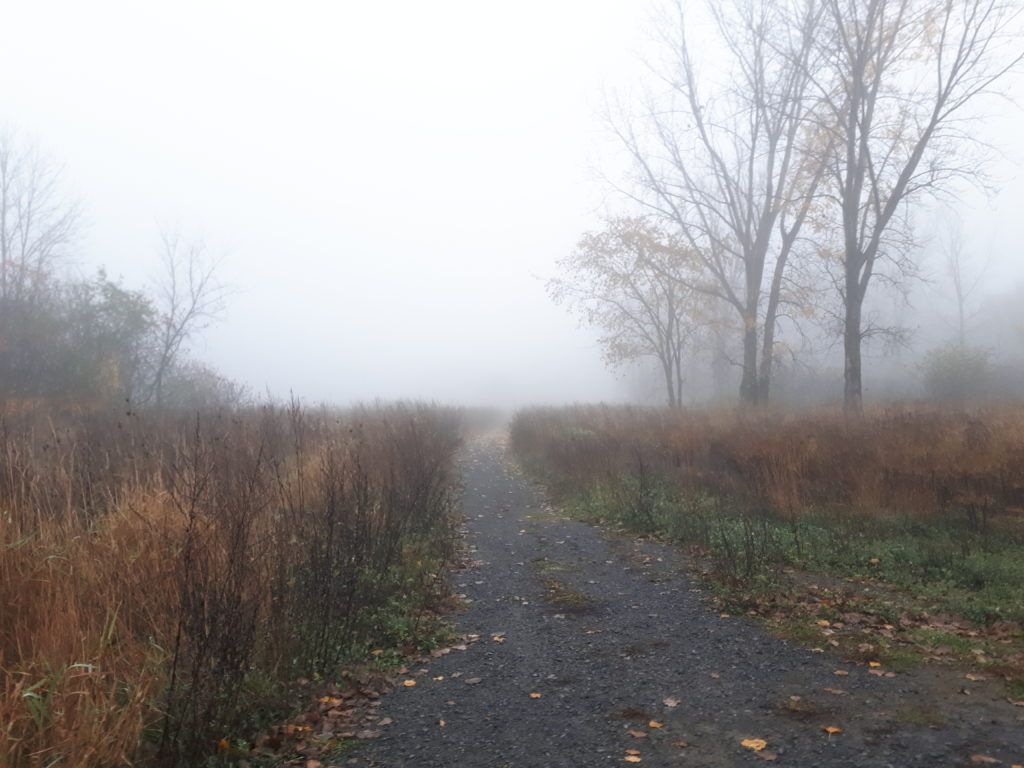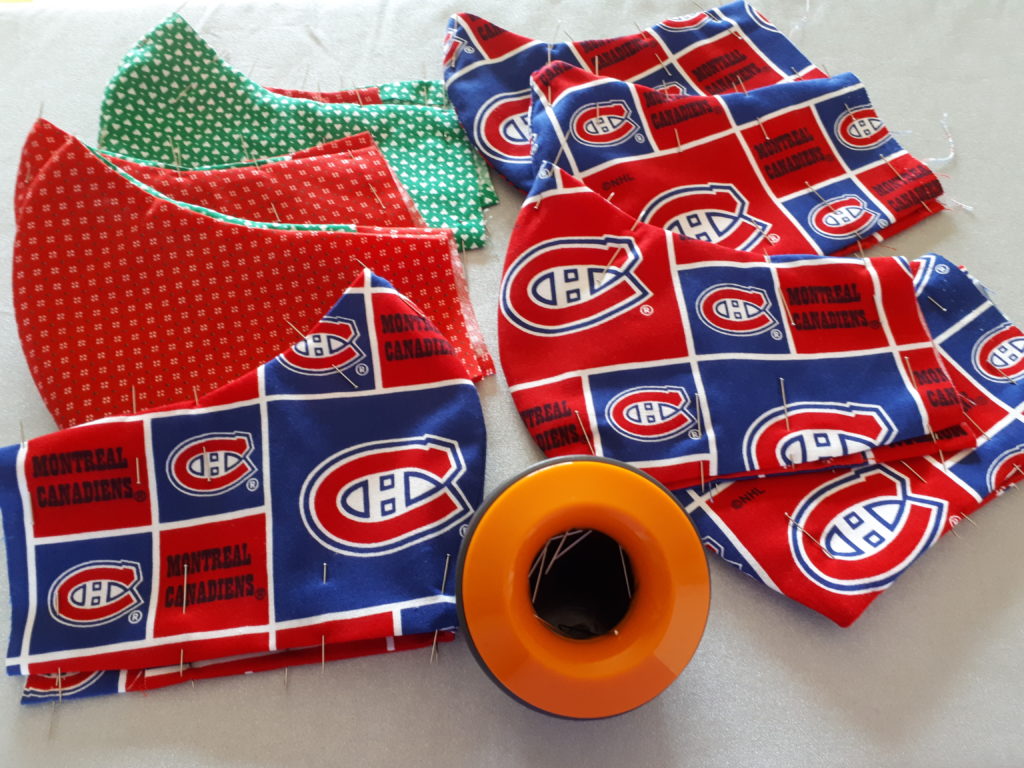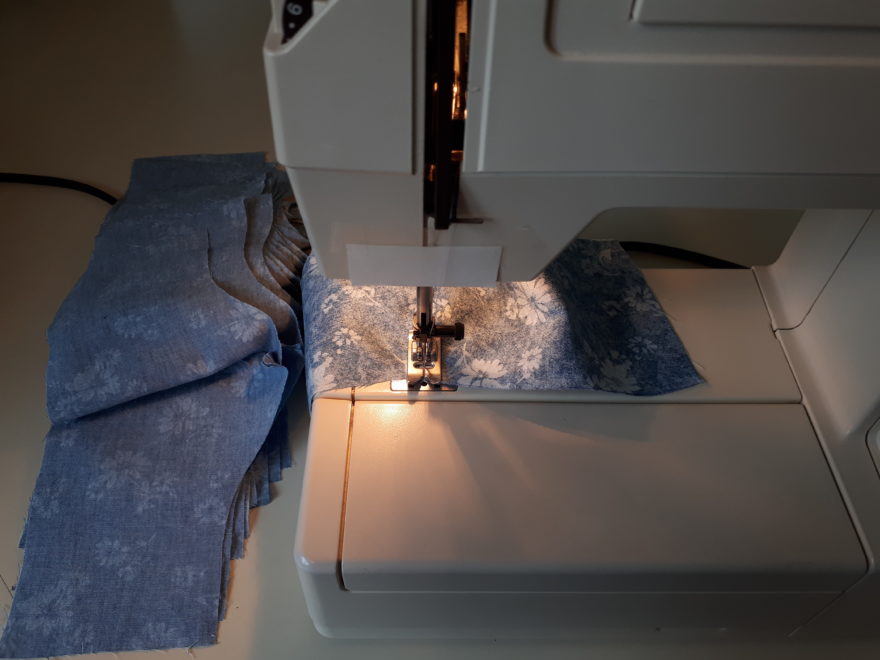Thanks so much for all of your encouragement, over on Instagram and Twitter and other social media, with my self-set creative arts challenge to sew eighty cloth masks to gift to my extended family. That may not sound like much of a challenge, but it really is, so I appreciate your kind words.
Since 2016 I’ve been sharing my life with a truly unwelcome visitor; a rare autoimmune and neuro-inflammatory disease which renders my right hand and lower arm more-or-less unusable. Complex Regional Pain Syndrome (CRPS) seems like such an innocuous name, but it represents an insidious and life-altering condition.
In my case it has also resulted in what the medical establishment terms a “mild cognitive impairment” (MCI), a completely unexpected (to me!) yet relatively common outcome in long-term CRPS.(1)
That cognitive impairment often doesn’t feel all that “mild” to me, though. It forced me to step away from my beloved career in bioethics, to abandon a new project which had developed into my dream job.
The MCI makes it so difficult to follow a train of thought, to complete even the simplest multi-step tasks. In fact, researchers have found that:
Significant neuropsychological deficits are present in 65% of patients, with many patients presenting with elements of a dysexecutive syndrome and some patients presenting with global cognitive impairment.”(1)
Libon, Schwartzman, Eppig, et al: J International Neuropsychological Society (JINS); 2010
What this translates to, in real life, is difficulty in correctly following the steps required to complete a task. I’ve loved to bake since childhood, spending time in my grandma’s kitchen, yet now I find myself sometimes suddenly struggling to follow recipes I’ve used hundreds of times before.
My grandma also taught me to sew, when I was a child, so this isn’t a new skill that I’m trying to learn on the fly. I know how to do this. But now I sometimes don’t. I’ll find myself about to top-stitch a seam, and will simply forget how to do it; even when I did the same thing yesterday, or a few minutes earlier.
We’re all used to momentary lapses in our memory, and I often hear meant-to-be-helpful comments to the effect that: “Oh, that happens to me all the time.” But when my memory snaps like this, my knowledge of how to complete a task doesn’t fade back in after a few moments. It doesn’t come back.
I find myself having to rely on video tutorials, to almost re-learn how to do things that I’ve been doing for years; tasks I’d complete without consciously thinking about how I’m doing them. Like how to top-stitch that seam, when I’d top-stitched several earlier that day.
Imagine a smooth river, for a moment. It doesn’t matter whether you’re on a boat, a bridge, or the shore. Picture it in your mind; you can see each bank, and there’s a strong current running the length of the river. There might be the sounds of birds, rushing water, urban noise, or wind in the trees.
Now I want you to think of that river as a person’s cognition; the flow of their knowledge and thoughts in their brain. There might be a few eddies or rough spots along the surface, but the current keeps that river flowing along to its destination; towards the completion of a task that you set out to complete.
My brain now lacks that smooth flow of the current below the surface, of my river of cognition. It feels as though my brain is more akin to Class VI whitewater rapids, with each train of thought or task an individual canoe (or raft) struggling to make its way through.
There are many obstacles in my river of cognition, with some areas completely inaccessible because of rocks or downed trees. It is constantly exhausting to navigate this reality, in addition to the physical fatigue caused by the autoimmune facets of CRPS.
Getting from point A to point B on my river of cognition is sometimes simple, how it used to be; how I used to be. Often it unexpectedly involves a series of detours, portages, and some moments of abject terror to get that canoe to its destination.
Like the times I’ve become lost, just a few blocks from home, while out walking. You might be thinking to yourself: “Well that’s no big deal, she could just use an app to find her way home.” Right?
Wrong. In those moments, I didn’t just forget how to get home – I also lost the ability to reason my way out of the situation. Me, a person who has always prided herself on my problem-solving abilities. I majored in philosophy, for crying out loud! Logic, reasoning; these are the tools I’ve used every day. Until this MCI.
To add insult to injury, I’ve always been the person in our family who has an innate sense of direction. I’ll usually give directions that say “turn north” instead of “turn right”, and can usually – unconsciously – find the north in any area.

That person was… gone. Me. It was terrifying. My condition is in no way the same landscape as that of a person living with dementia or advanced Alzheimer’s disease, but I’ve visited that place several times now.
I can understand the fear – the terror – of feeling disoriented and lost; of not knowing where you belong, or how to get there. Where home is. Or a feeling of deep longing for something that you can’t place, or name. Something profoundly… missing.
It didn’t matter that I had a smartphone with me, access to navigation apps. My thought processes couldn’t link that knowledge with the “how to” of getting home. My brain couldn’t get from a two and another two adds up to four. It never even occurred to me to use my phone; not even to call someone, to send a text.
This is why I now use a navigation app in my car, even if I’m driving to the grocery store which is literally at the end of the road into our area! And I set alarm-notes in my calendar, to remind me what it is that I wanted to pick up once I get there – or to check the list in my pocket.
I have no cognitive difficulties with riding a bike, driving a car, running my sewing machine, walking, swimming; it’s the multi-step processes that throw me off.
Making these fabric masks is a multi-step process; ironing the fabric, positioning my home-made pattern pieces, cutting out each piece of the mask with the fabric facing the correct way, pinning the various parts of each mask together, then sewing, pressing, and top-stitching the seams.

For each finished mask I first have to cut five pieces of fabric, sew six seams, clip two curved seams (cutting a series of small notches into the curved seam prevents the finished mask from having bumps down its centre, over the nose and mouth), top-stitch five seams (top-stitching helps ensure a good fit), and press out (iron) the seams at almost every step.
Do you better understand now why my goal of making these eighty masks is a challenge? I’ve completed and delivered or mailed the first 40 masks, and have already started making the next forty.
It’s both difficult and important for me to finish making these masks – if my little sewing machine can hold out for another forty! I’m a person who has always needed to feel that I’m helping others; that, after all, is why I choose biomedical ethics (bioethics) as my field of work.
Sewing these masks is a way for me to keep others safe during the current COVID-19 pandemic, to help others. Fabric masks are also an environmentally-friendly alternative to all of the single-use masks that are already littering our sidewalks and finding their way into waterways where they can endanger wildlife:
Cloth masks are a simple, economic and sustainable alternative to surgical mask as a means of source control of SARS-CoV-2 for general community.”(2)
Esposito, Principi, Leung, Migliori: Eur Respir J.; 2020
On that note, I’ll sign off for today. It’s time to get back to sewing masks. Be safe out there, and please remember to keep your distance from others, to wash your hands often, and to… wear a mask! ‘-)
As always, thanks so much for stopping by! The blog’s comments feature has been disabled due to waves of obscene spam, so please feel free to reach out via Instagram or Twitter; my feeds are at the bottom of the screen if you’re reading this on a laptop, or along the edge if you’re using a phone.
References
(1) Libon, David J, Schwartzman, Robert J, Eppig, Joel, et al. Neuropsychological deficits associated with Complex Regional Pain Syndrome. J International Neuropsychological Society (JINS). 2010; 16, 566–573. Online 19 Mar 2010. doi:10.1017/S1355617710000214. Accessed 02 Jun 2020:
https://www.cambridge.org/core/journals/journal-of-the-international-neuropsychological-society/article/neuropsychological-deficits-associated-with-complex-regional-pain-syndrome/F56D83F23BB269C52DDF43198BA0536D#
(2) Esposito S, Principi N, Leung CC, Migliori GB. Universal use of face masks for success against COVID-19: evidence and implications for prevention policies. (This “article is part of the activities of WAidid (World Association for Infectious Diseases and Immunological Disorders), the Global Tuberculosis Network (GTN) and the WHO Collaborating Centre for Tuberculosis and Lung Diseases”.) ePub 29 Apr 2020. Eur Respir J. 2020;2001260. doi:10.1183/13993003.01260-2020. Accessed 02 Jun 2020:
https://erj.ersjournals.com/content/early/2020/04/27/13993003.01260-2020

